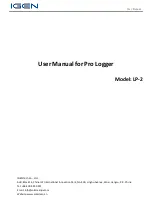
MODBUS ADDRESS CONFIGURATION AND BAUD
RATE BY DIP-SWITCH
Through the dip-switch on the front panel of the module,
you can change the Modbus address and baud rate.
In the case in which all the dip switches are set to zero,
the module will take the calibration from EEPROM,
otherwise it will take parameters from a dip-switch.
In order to assign addresses more than 62 assignments
you need to take advantage of the interface software
FACILE QA-TEMP. In order to assign values of baud rates
different from those selectable dip you should take
advantage of the interface software FACILE QA-TEMP.
For changing the addresses and the baud rate it can also
be done by writing directly on the related registers.
POWER SUPPLY:
10...40 Vdc or 20...28 Vac - Connectors 16 and 17, or by
T-BUS connector (optional tool) on the base of the
module (see the picture placed on the bottom of this
page).
POWER SUPPLY by T-BUS CONNECTION
(T-BUS
connector required):
it is possible to mount the accessory T-BUS to carry both
power and serial communication. The number of
modules supported by the function of the power supply
bus is used (check the absorption of the modules).
INTERFACE PROGRAM FACILE QA-TEMP
FACILE QA-TEMP is the configuration software for QA-
TEMP module.
The software is free and downloadable from the website:
www.qeed.it/category/software/facile-qa-temp/ .
To communicate with the module you have to connect
via USB port directly on your PC.
It is possible to configure the module via RS485 through
the register map contained on this manual.
QA-TEMP
Q
A
-T
E
M
P
QUICK GUIDE
8
09
2015
This document is the property of DEM S.p.A. Duplication or
reproduction is prohibited. The contents of this document
correspond to the products and technologies described. This
information may be amended or supplemented by technical
and commercial requirements.
Disposal of Electrical & Electronic Equipment (Applicable throughout the European Union and other European countries with separate
collection programs) This symbol, found on your product or on its packaging, indicates that this product should not be treated as household
waste when you wish to dispose of it. Instead, it should be handed over to an applicable collection point for the recycling of electrical and
electronic equipment. By ensuring this product is disposed of correctly, you will help prevent potential negative consequences to the
environment and human health, which could otherwise be caused by inappropriate disposal of this product. The recycling of materials will
help to conserve natural resources. For more detailed information about the recycling of this product, please contact your local city office,
waste disposal service or the retail store where you purchased this product.
Q
U
IC
K
G
U
IDE
LEDS - FRONT SIGNALS:
POWER:
power presence on the device.
FAIL:
presence of a failure / error on the device. It is
activated in the case have been activated by FAIL
messages on FACILE QA-TEMP. One or more events
FAIL are active.
RX, TX:
the module is communicating via RS485 (LED
blinking).
Dout:
digital output active.
MOUNTING INSTRUCTIONS:
To mount the card on DIN rail, we recommend to
place the top of the form on the edge of the bar
omega, then pushing the bottom until it clicks. The
module is equipped with a slider fastening that will
be pushed forward in order to ensure the perfect
fastening of the module on the bar.
NOTE:
through the hole on the case of QA - TEMP
(shown in the figure ) , you can access an internal DIP
SWITCH . Turning up the " DIP 1” you can activate the
dynamic terminating of the Modbus .
ENGLISH


























